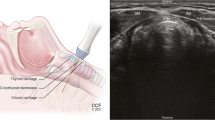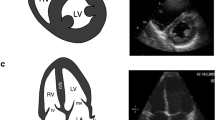Abstract
The Department of Anesthesiology’s Acute Pain Service (APS) places ultrasound-guided peripheral nerve blocks (PNBs) to manage acute peri-operative pain. PNB success is dependent on detailed anatomical knowledge which residents may not have formally reviewed since medical school. This study describes the integration of a cadaver review session (CRS) that reintroduces PNB-related anatomy into the existing APS rotation. During each CRS, an anatomist reviewed the major nerve and surrounding structures, while an APS attending integrated the anatomy with PNB techniques. During the pilot, 1st- and 3rd-year clinical anesthesia (CA) residents (9 CA1s, 7 CA3s) completed pre- and post-session surveys and rated the CRS’s perceived value and impact on self-confidence with anatomical knowledge. Following the pilot, an additional 17 CA1s and 9 CA3s participated in the CRS and completed post-session surveys. Descriptive statistics were used to summarize responses and unpaired t tests were used to compare pre- and post-session responses and responses between cohorts. All participants were overwhelmingly positive about the CRS and its value to the APS rotation, with 98% agreeing they recommend the CRS and found it accessible. Residents believed participation would improve board exam (average = 4.83 ± 0.66) and clinical performance (average = 4.86 ± 0.65), and self-reported increases in confidence with anatomical knowledge. Residents in the pilot group reported significantly greater confidence (p < 0.01) in their perceived anatomical knowledge after the CRS. The CRS positively impacted resident confidence in their anatomical knowledge and perceived ability to identify anatomical structures. Residents reported the CRS was a highly valued addition to regional anesthesia training.
Similar content being viewed by others
References
Grauman S, Boethius J, Johansson J. Regional anaesthesia is associated with shorter postanaesthetic care and less pain than general anaesthesia after upper extremity surgery. Anesthesiol Res Pract. 2016;2016:6308371.
Herring AA, Stone MB, Nagdev AD. Ultrasound-guided abdominal wall nerve blocks in the ED. Am J Emerg Med. 2012;30(5):759–64.
McNaught A, Shastri U, Carmichael N, Awad IT, Columb M, Cheung J, et al. Ultrasound reduces the minimum effective local anaesthetic volume compared with peripheral nerve stimulation for interscalene block. Br J Anaesth. 2011;106(1):124–30.
Abrahams MS, Aziz MF, Fu RF, Horn JL. Ultrasound guidance compared with electrical neurostimulation for peripheral nerve block: a systematic review and meta-analysis of randomized controlled trials. Br J Anaesth. 2009;102(3):408–17.
Joshi G, Gandhi K, Shah N, Gadsden J, Corman SL. Peripheral nerve blocks in the management of postoperative pain: challenges and opportunities. J Clin Anesth. 2016;35:524–9.
Richman JM, Liu SS, Courpas G, Wong R, Rowlingson AJ, McGready J, et al. Does continuous peripheral nerve block provide superior pain control to opioids?A Meta-Analysis. Anesth Analg. 2006;102(1):248–57.
Bierstein K. Preventing wrong site surgery. ASA Monitor. 2007;71(8):21–3.
Metzner J, Posner KL, Lam MS, Domino KB. Closed claims’ analysis. Best Pract Res Clin Anaesthesiol. 2011;25(2):263–76.
Kent CD, Stephens LS, Posner KL, Domino KB. What adverse events and injuries are cited in anesthesia malpractice claims for nonspine orthopaedic surgery? Clin Orthop Relat Res. 2017;475(12):2941–51.
Neal JM. Ultrasound-guided regional anesthesia and patient safety: update of an evidence-based analysis. Reg Anesth Pain Med. 2016;41(2):195–204.
Neal JM, Barrington MJ, Brull R, Hadzic A, Hebl JR, Horlocker TT, et al. The second ASRA practice advisory on neurologic complications associated with regional anesthesia and pain medicine: executive summary 2015. Reg Anesth Pain Med. 2015;40(5):401–30.
ACGME Program requirements for graduate medical education in anesthesiology. Accredidation Council for Graduate Medical Education. 2018. https://www.acgme.org/Portals/0/PFAssets/ProgramRequirements/040Anesthesiology2018.pdf?ver=2018-06-14-142529-527. Accessed 8 Dec 2018.
Mian A, Chaudhry I, Huang R, Rizk E, Tubbs RS, Loukas M. Brachial plexus anesthesia: a review of the relevant anatomy, complications, and anatomical variations. Clin Anat. 2014;27(2):210–21.
Kinjo S, Frankel A. Failure of supraclavicular block under ultrasound guidance: clinical relevance of anatomical variation of cervical vessels. J Anesth. 2012;26(1):100–2.
Kirkpatrick DL. Evaluating training programs the four levels, third edition. In: Kirkpatrick JD, editors,3rd ed. San Francisco: Berrett-Koehler Publishers; 2006.
Estai M, Bunt S. Best teaching practices in anatomy education: a critical review. Ann Anat. 2016;208:151–7.
Rizzolo Lawrence J, Stewart WB. Should we continue teaching anatomy by dissection when …? Anat Rec B New Anat. 2006;289B(6):215–8.
Martinelli SM, Monroe H, Coombs R, Miller N, Borstov A, Salo-Coombs V. Assessing the impact of a regional anesthesia workshop on anesthesiology residents’ perceived comfort in performing peripheral nerve blocks. J Educ Perioper Med. 2012;14(2):E061.
Orebaugh SL. A regional anesthesia cadaver dissection laboratory. J Educ Perioper Med. 2006;8(1):E040.
Doomernik DE, van Goor H, Kooloos JGM, ten Broek RP. Longitudinal retention of anatomical knowledge in second-year medical students. Anat Sci Educ. 2017;10(3):242–8.
Custers EJFM. Long-term retention of basic science knowledge: a review study. Adv Health Sci Educ Theory Pract. 2010;15(1):109–28.
Ahmed K, Rowland S, Patel V, Khan RS, Ashrafian H, Davies DC, et al. Is the structure of anatomy curriculum adequate for safe medical practice? Surgeon. 2010;8(6):318–24.
Singh R, Shane Tubbs R, Gupta K, Singh M, Jones DG, Kumar R. Is the decline of human anatomy hazardous to medical education/profession?—a review. Surg Radiol Anat. 2015;37(10):1257–65.
Ellis H. Medico-legal litigation and its links with surgical anatomy. Surgery. 2002;20(8):i–ii.
Fabri PJ, Zayas-Castro JL. Human error, not communication and systems, underlies surgical complications. Surgery. 2008;144(4):557–65.
Bowyer MW, Shackelford SA, Garofalo E, Pugh K, Mackenzie CF. Perception does not equal reality for resident vascular trauma skills. J Surg Res. 2015;198(2):280–8.
Lufler RS, Lazarus MD, Stefanik JJ. The Spectrum of learning and teaching: the impact of a fourth-year anatomy course on medical student knowledge and confidence. Anat Sci Educ. 2019 0(0) early view.
Favazzo L, Willford JD, Watson RM. Correlating student knowledge and confidence using a graded knowledge survey to assess student learning in a general microbiology classroom. J Microbiol Biol Educ. 2014;15(2):251–8.
Clanton J, Gardner A, Cheung M, Mellert L, Evancho-Chapman M, George RL. The relationship between confidence and competence in the development of surgical skills. J Surg Educ. 2014;71(3):405–12.
Kim SC, Fisher JG, Delman KA, et al. Cadaver-based simulation increases resident confidence, initial exposure to fundamental techniques, and may augment operative autonomy. J Surg Educ. 2016;73(6):e33–41.
Author information
Authors and Affiliations
Corresponding author
Ethics declarations
Conflict of Interest
The authors declare that they have no conflicts of interest.
Ethical Approval
All procedures performed in studies involving human participants were in accordance with the ethical standards of the institution (Colorado Institutional Review Board, ID# 17-1427) and with the 1964 Helinski declaration and its later amendments or comparable ethical standards.
Informed Consent
Informed consent was obtained from all individual participants included in the study.
Additional information
Publisher’s Note
Springer Nature remains neutral with regard to jurisdictional claims in published maps and institutional affiliations.
Rights and permissions
About this article
Cite this article
Cale, A.S., Hendrickse, A., Lyman, M. et al. Integrating a Cadaver Review Session into the Existing Regional Anesthesia Training for Anesthesiology Residents: An Initial Experience. Med.Sci.Educ. 30, 695–703 (2020). https://doi.org/10.1007/s40670-020-00934-z
Published:
Issue Date:
DOI: https://doi.org/10.1007/s40670-020-00934-z




